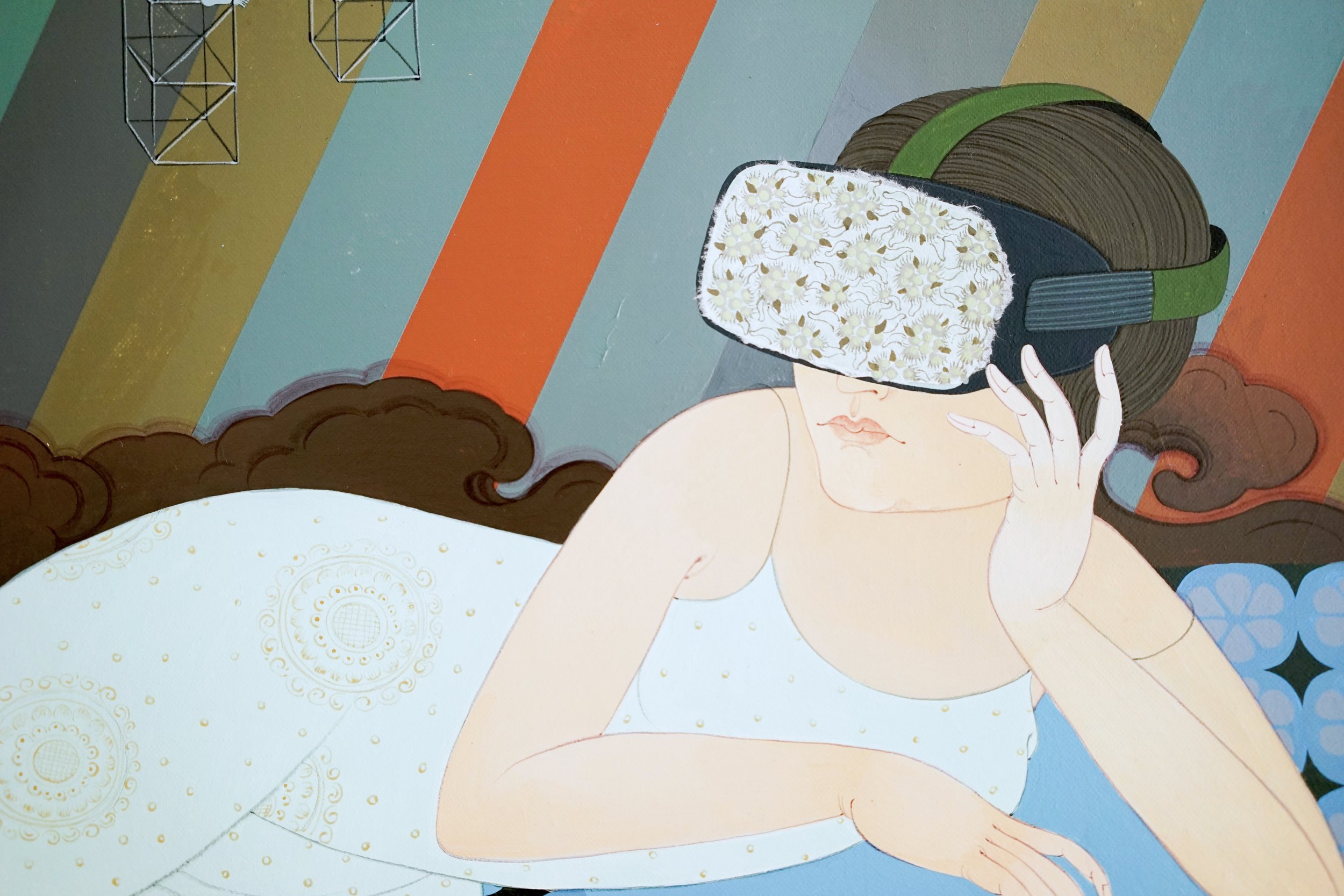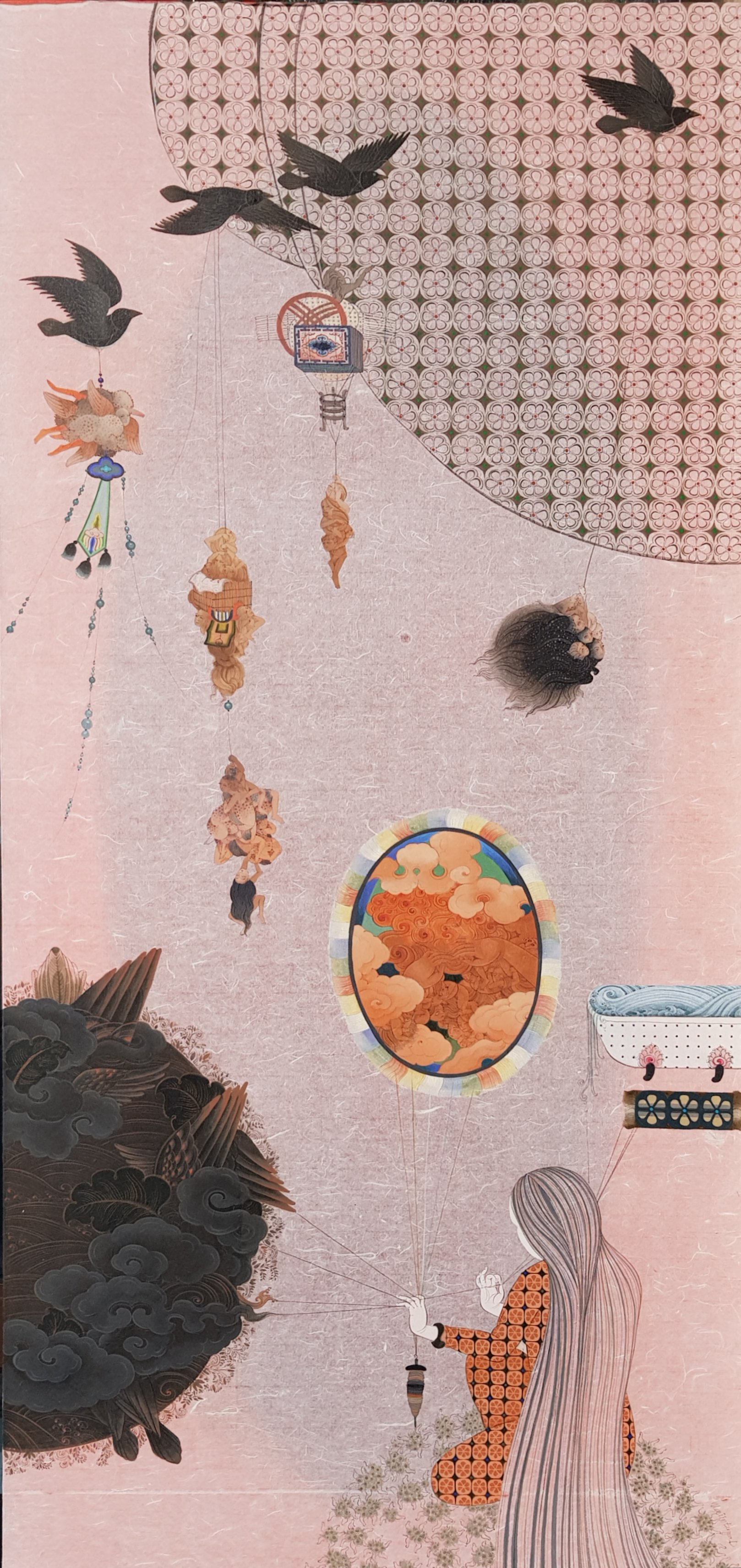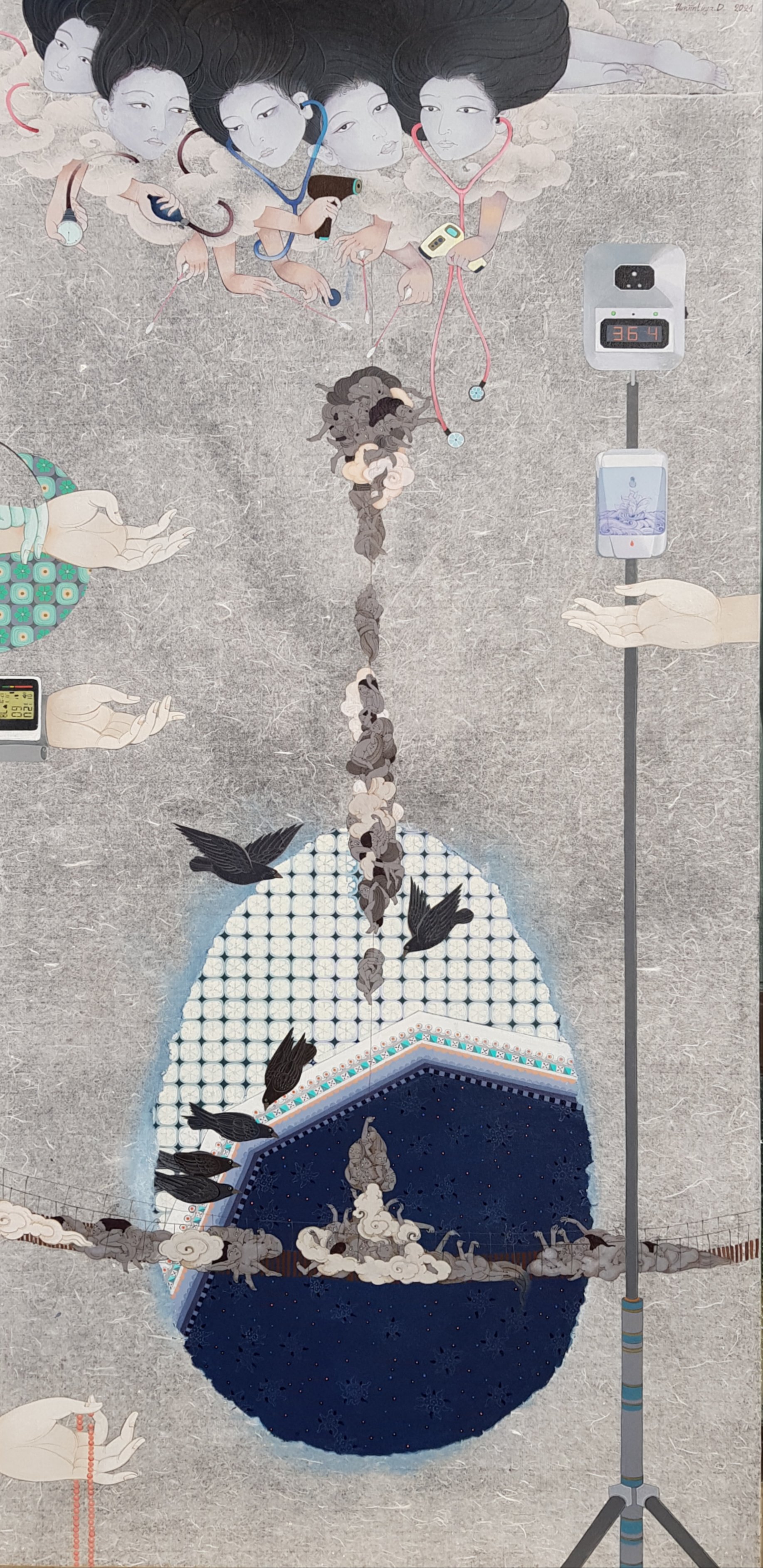Uuriintuya Dagvasambuu:
Moods in the Metaverse
Essay by Batzorig Mart, Art Historian, Curator
March 17, 2022 - May 23, 2022
Opening March 17, 5-7 pm
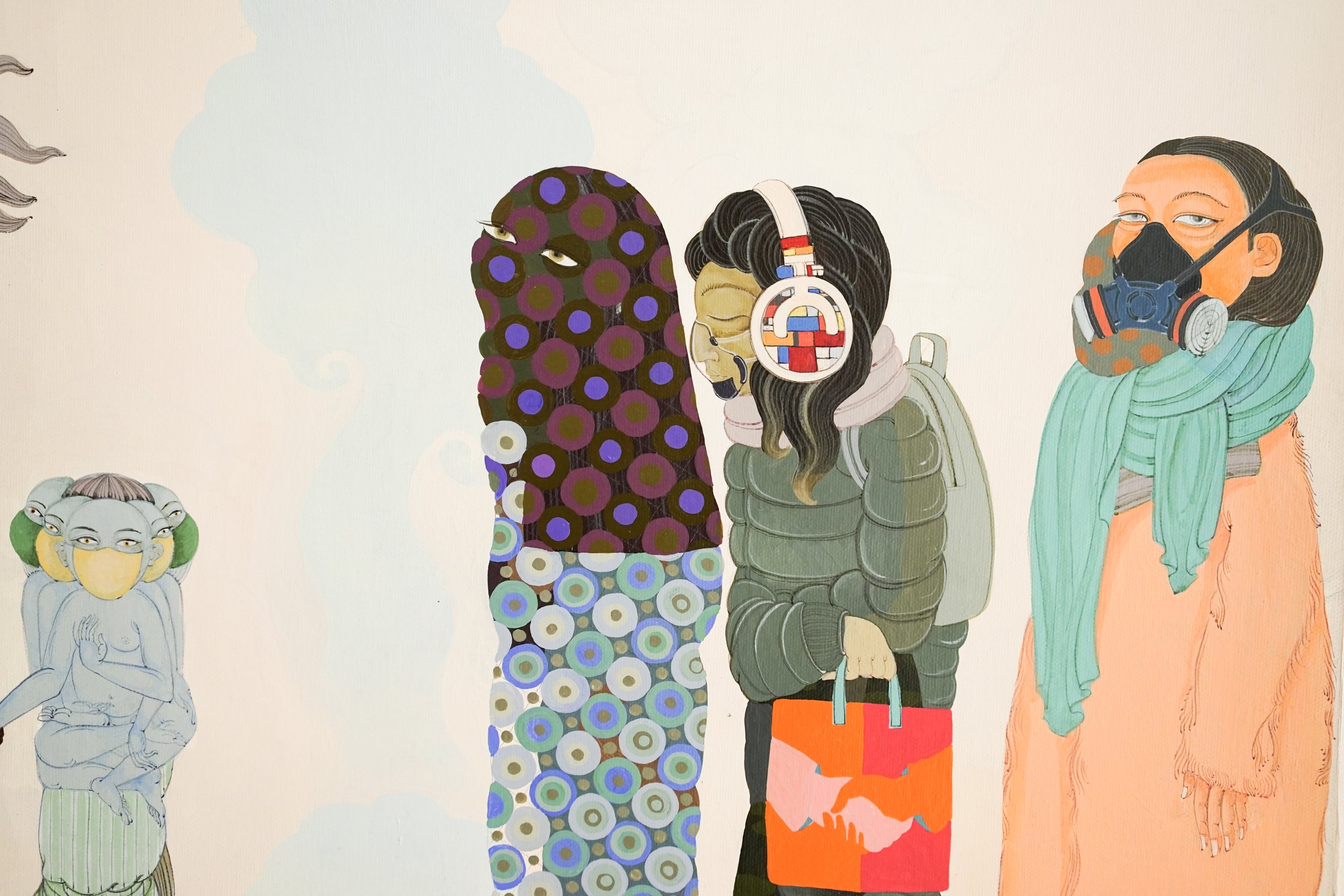
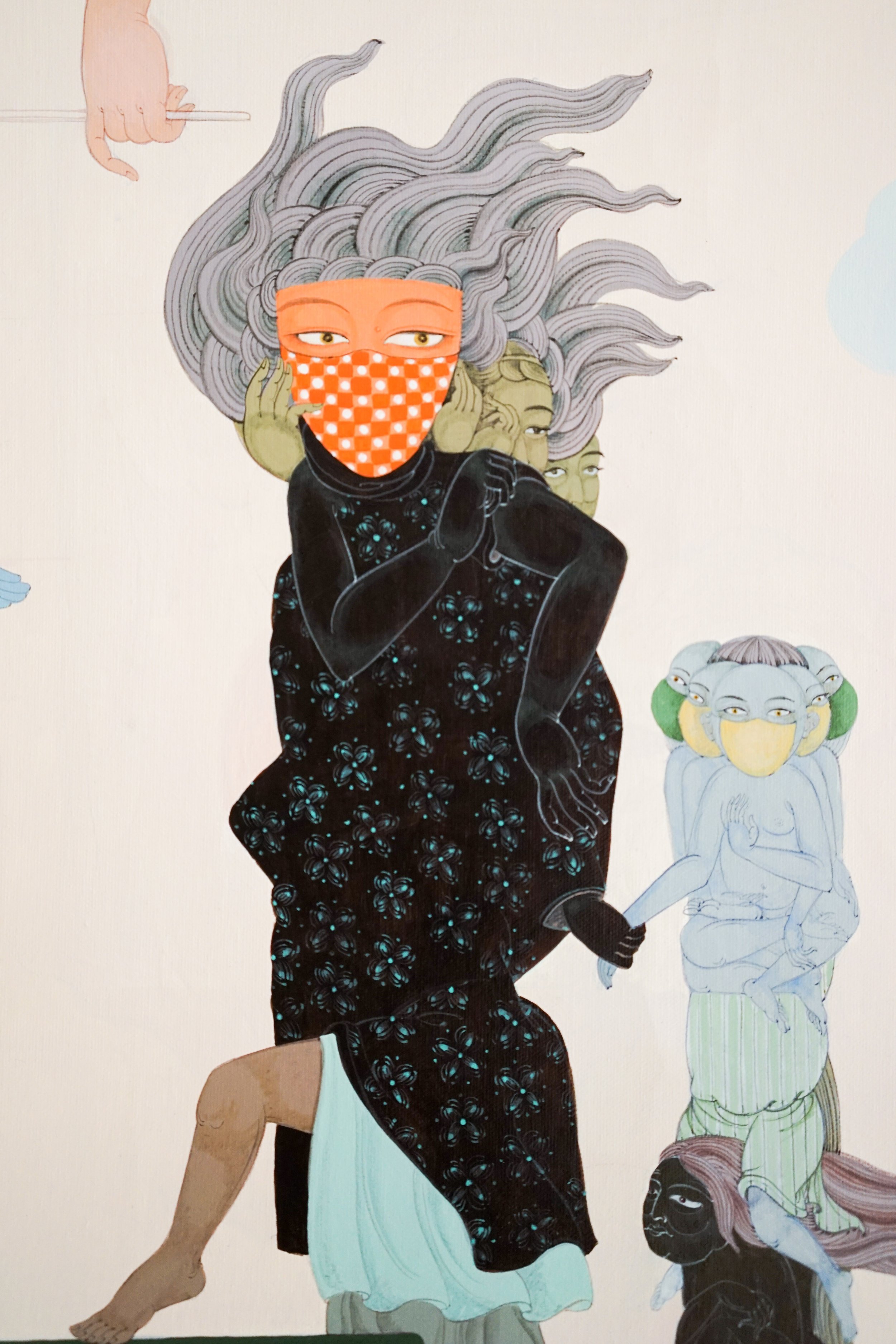

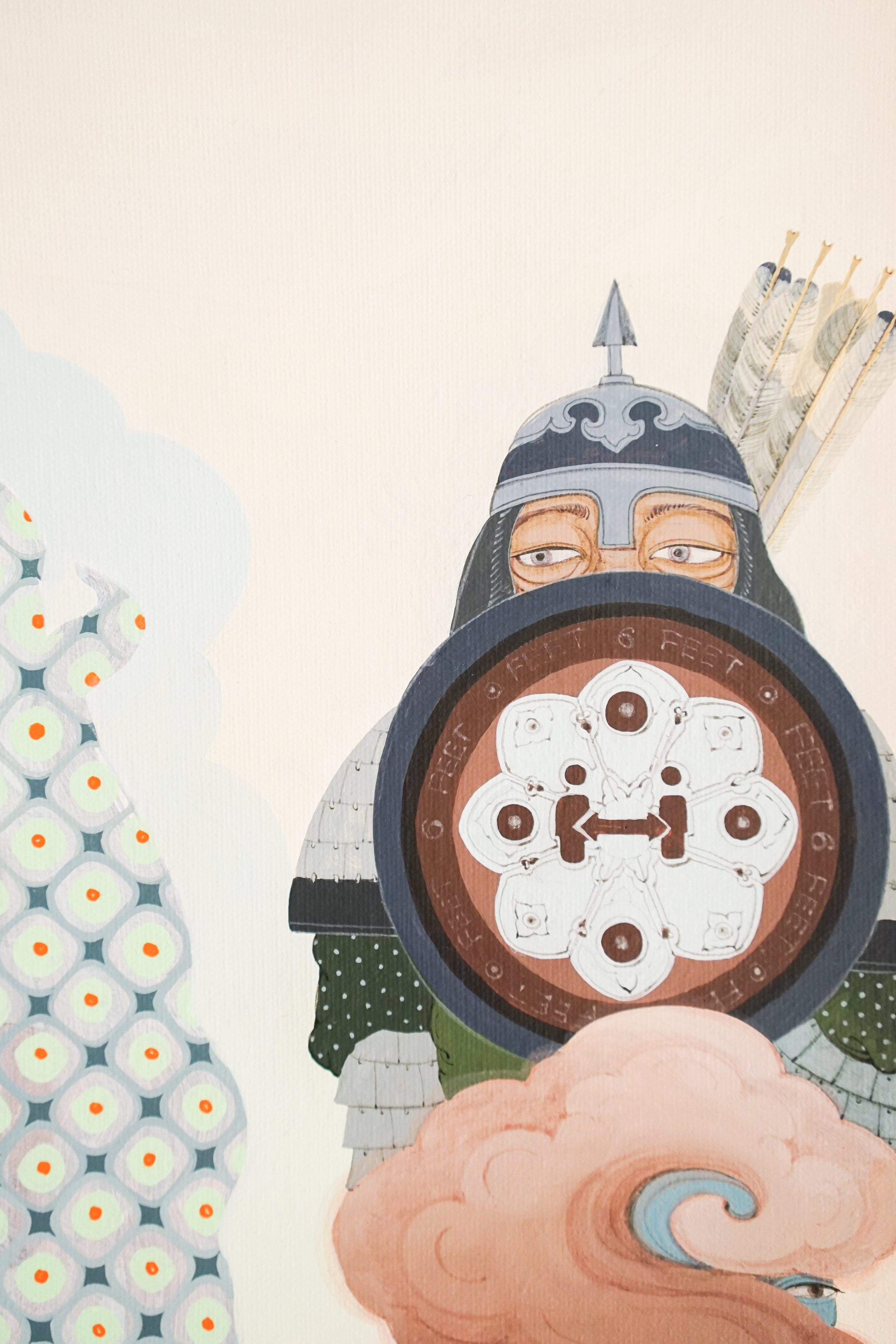
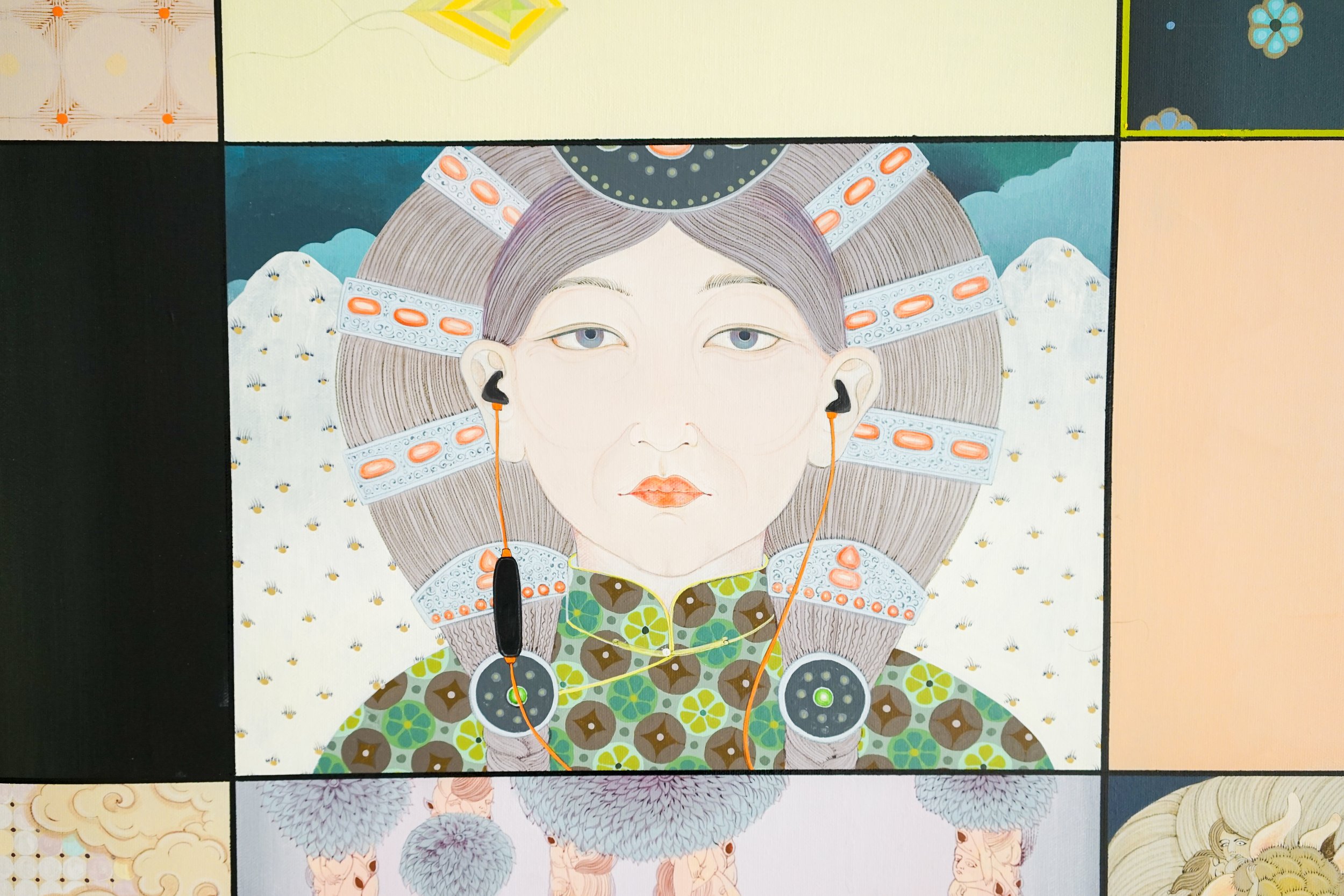
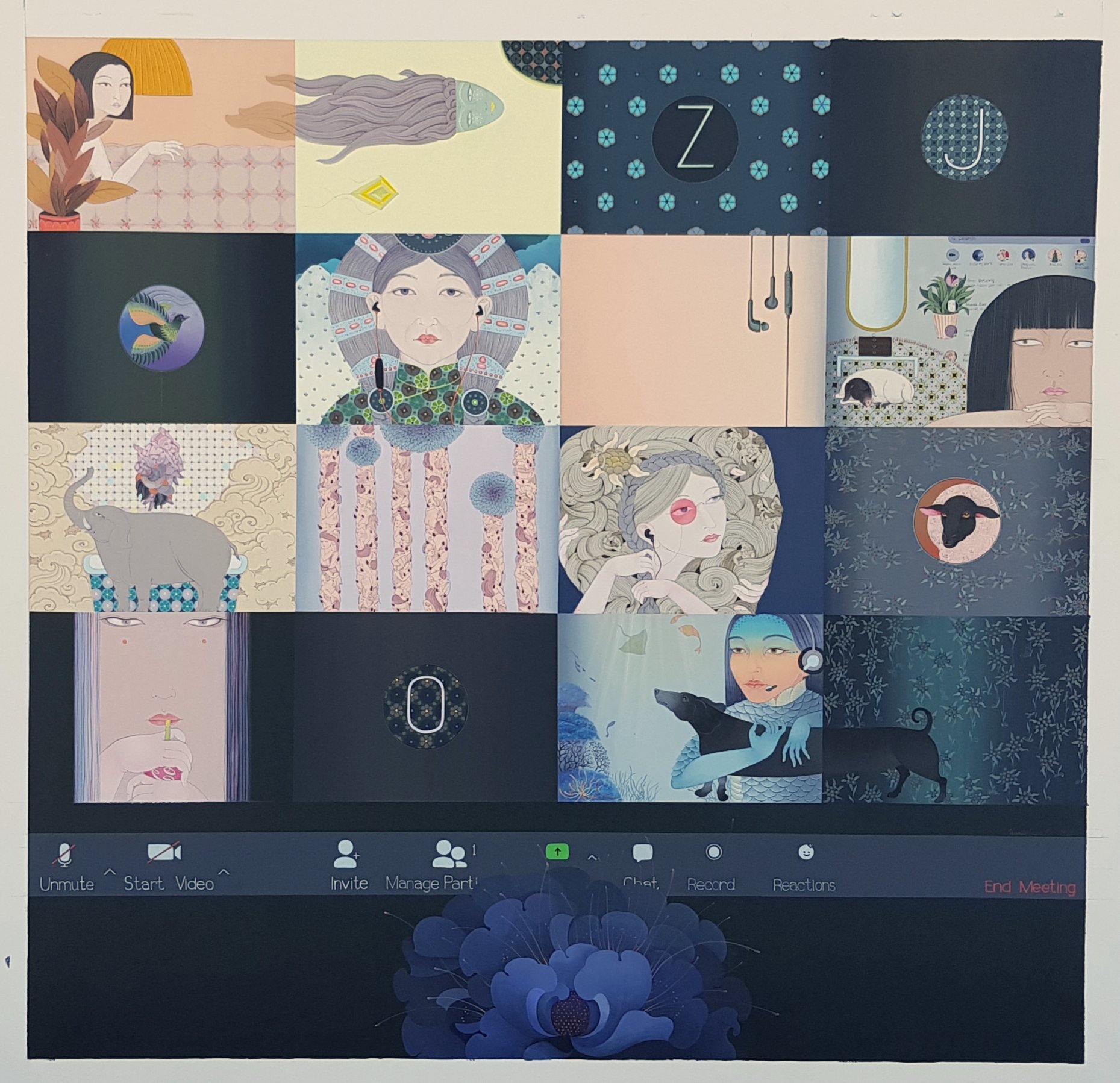
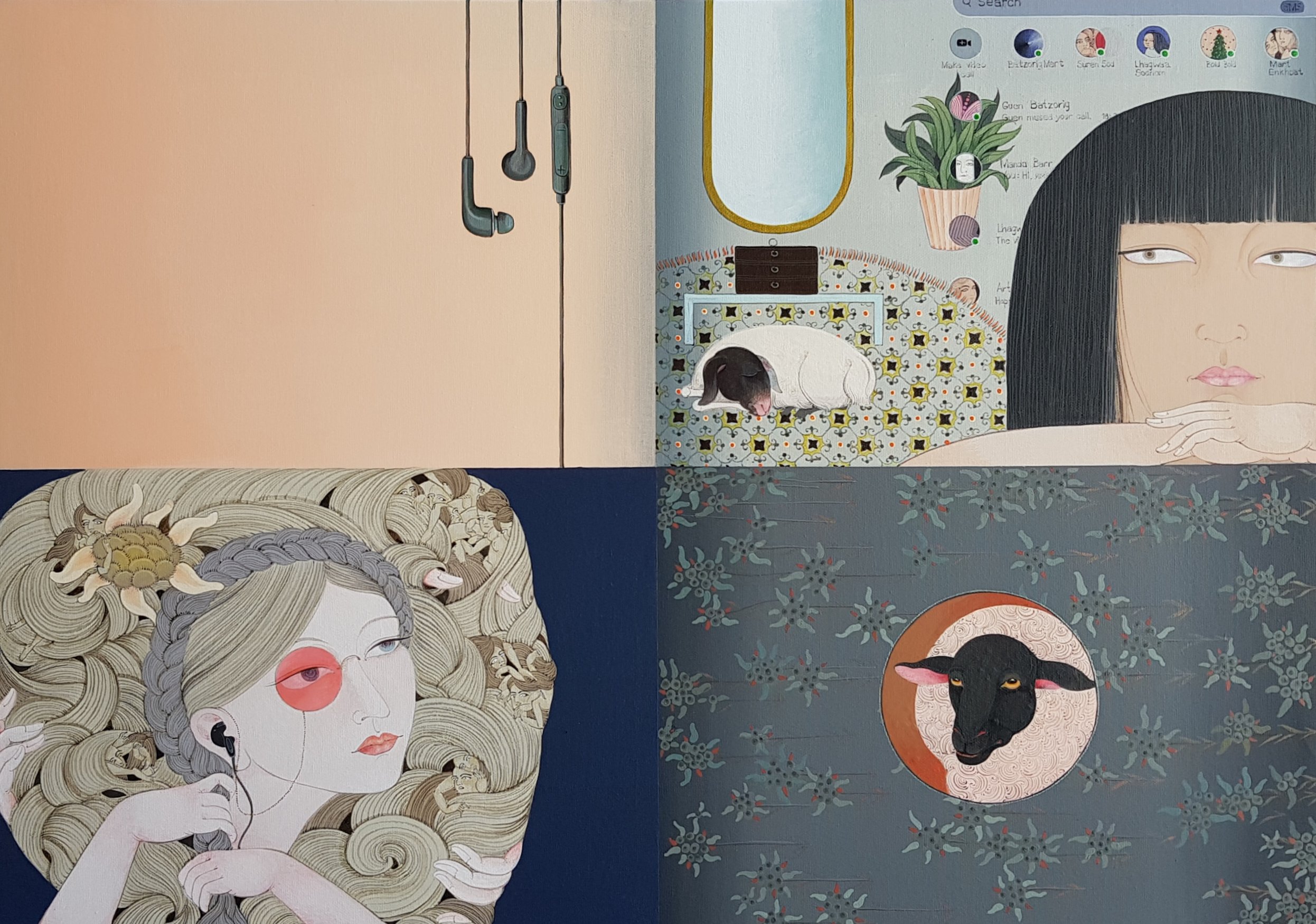
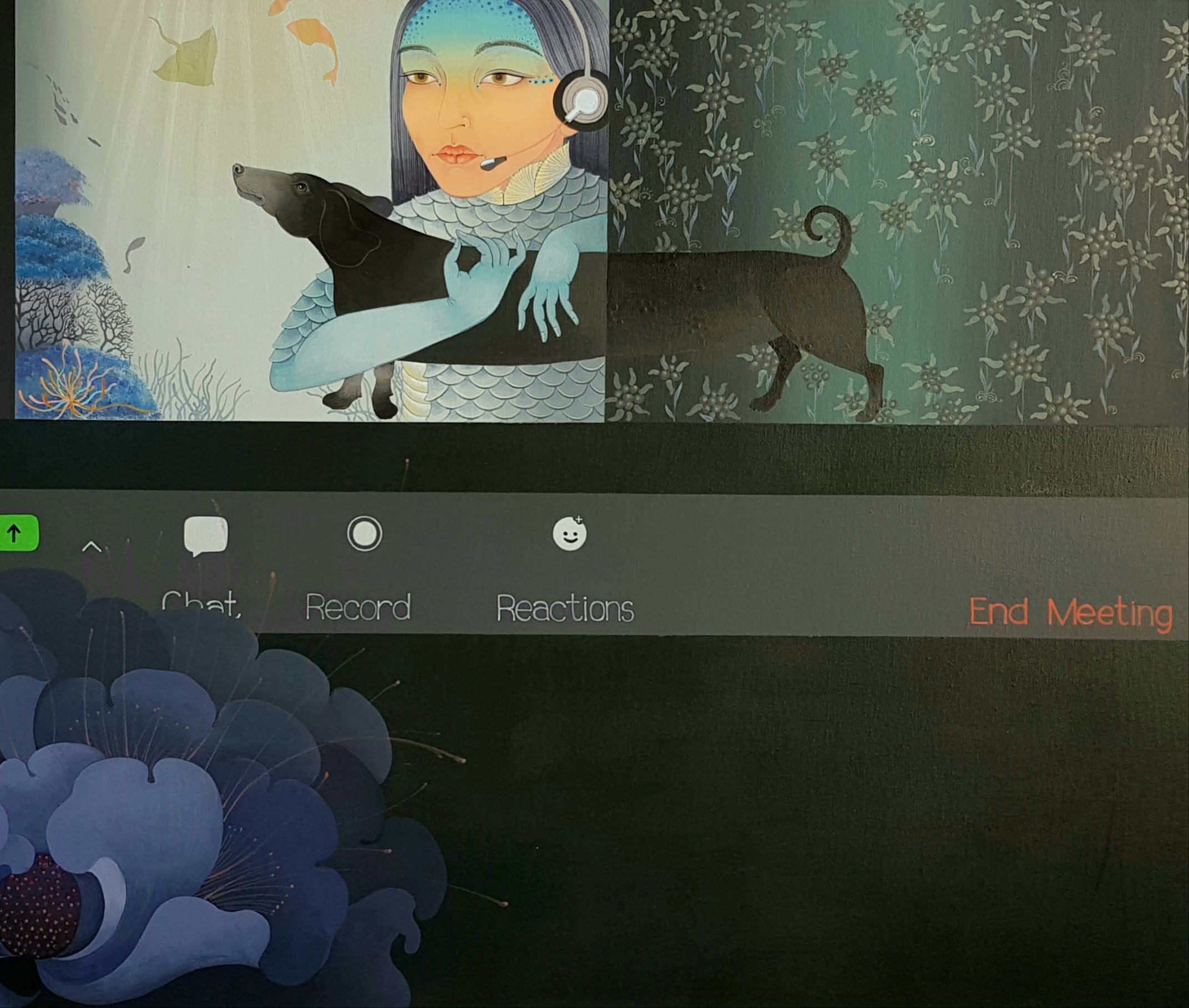
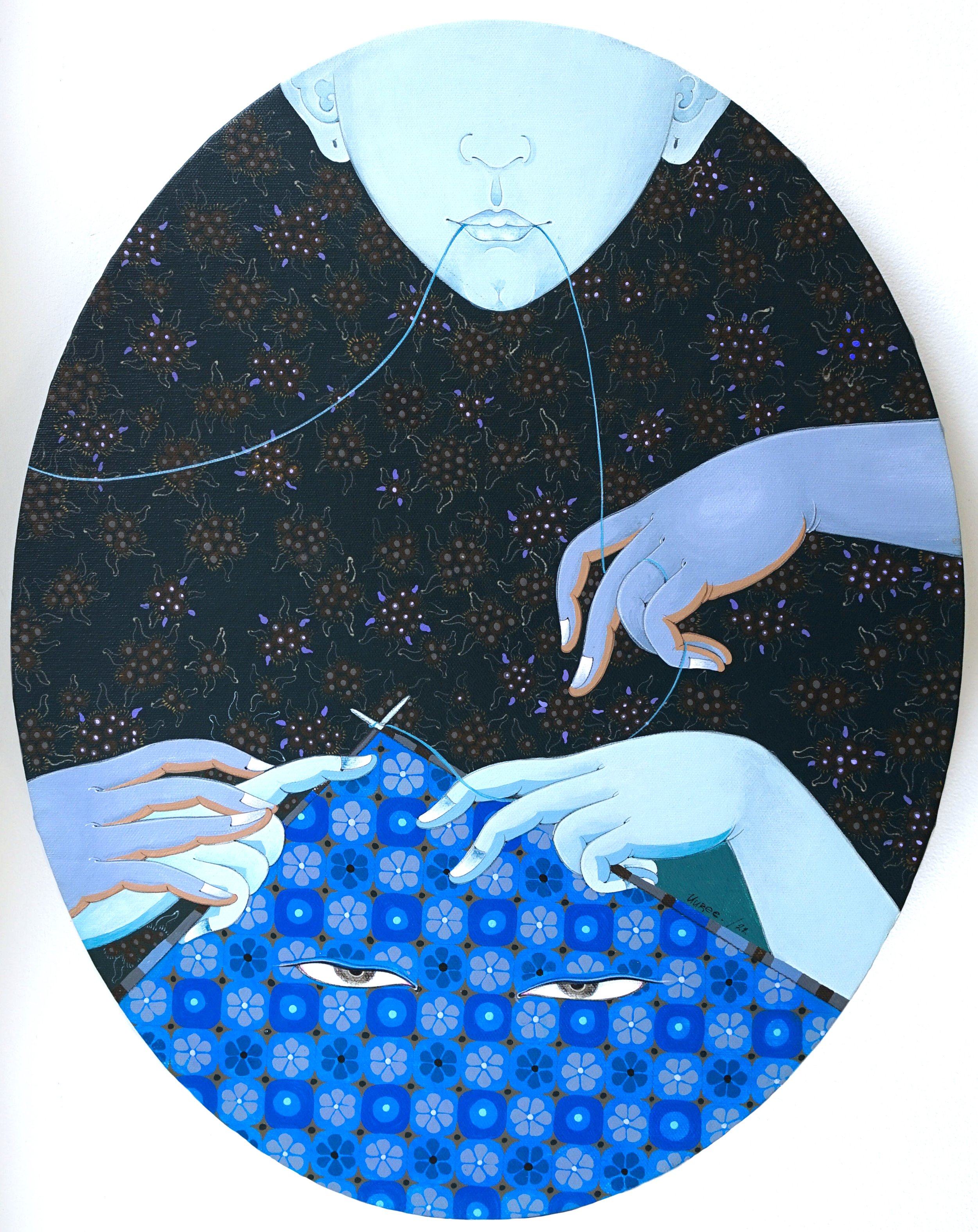

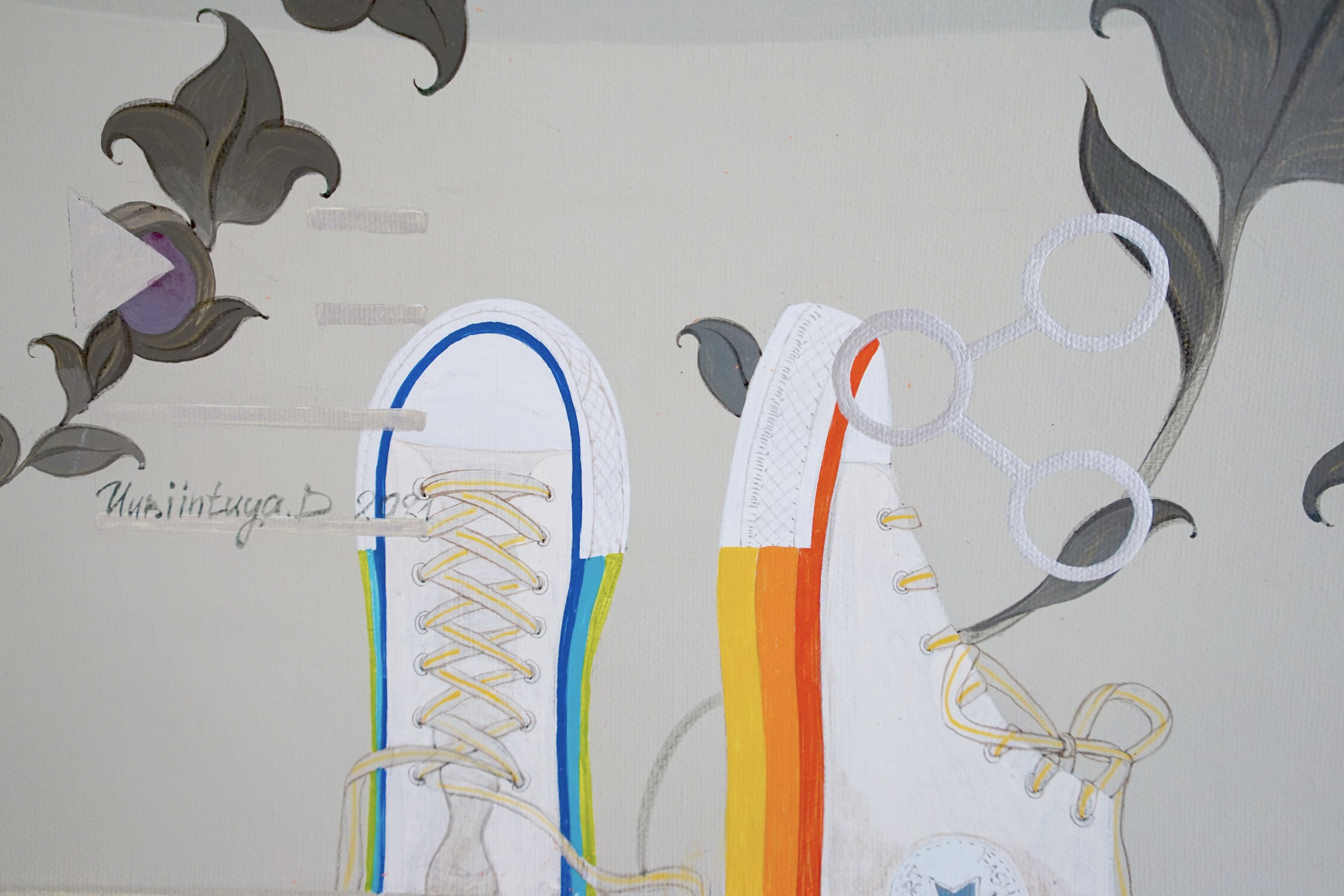

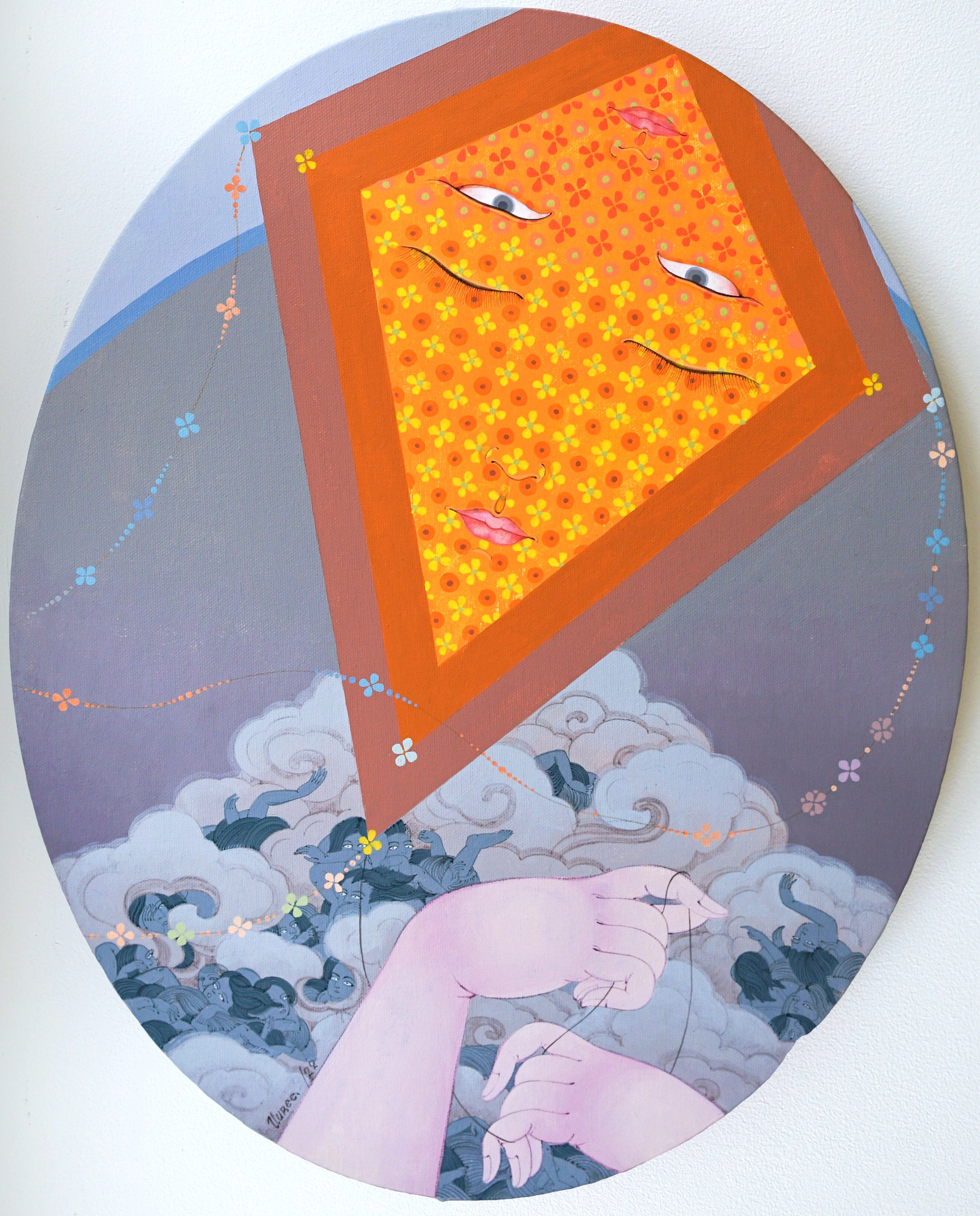
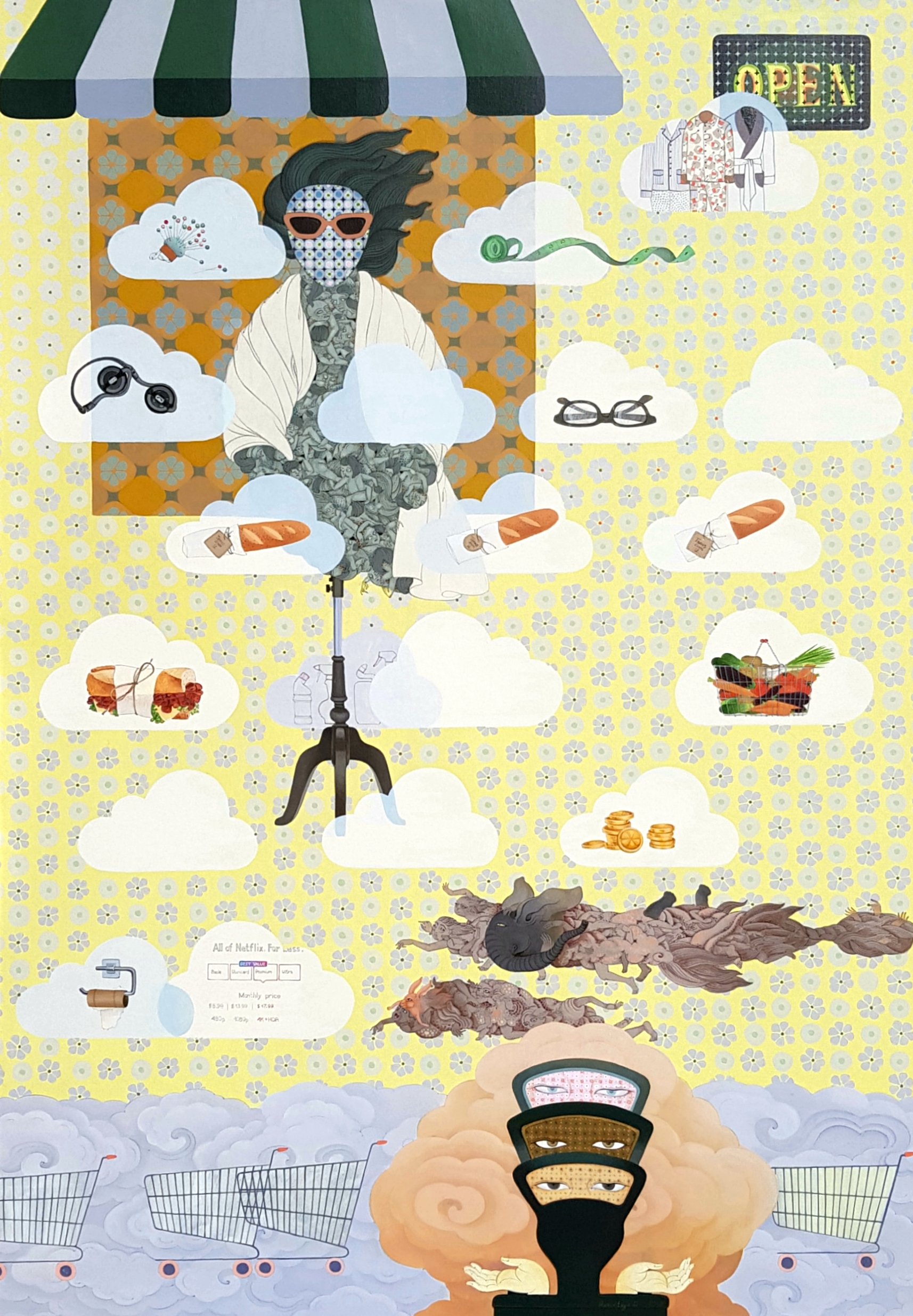
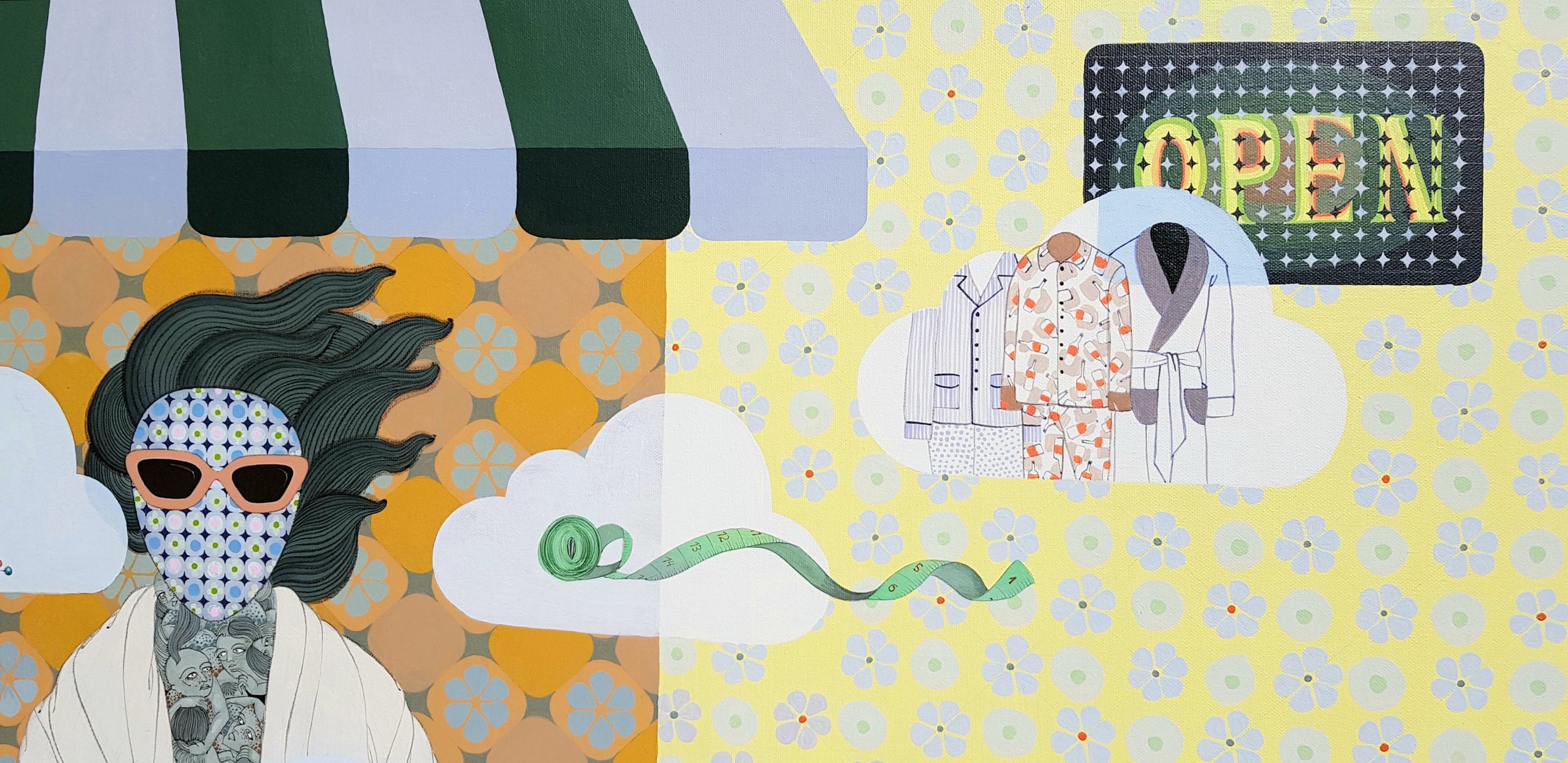
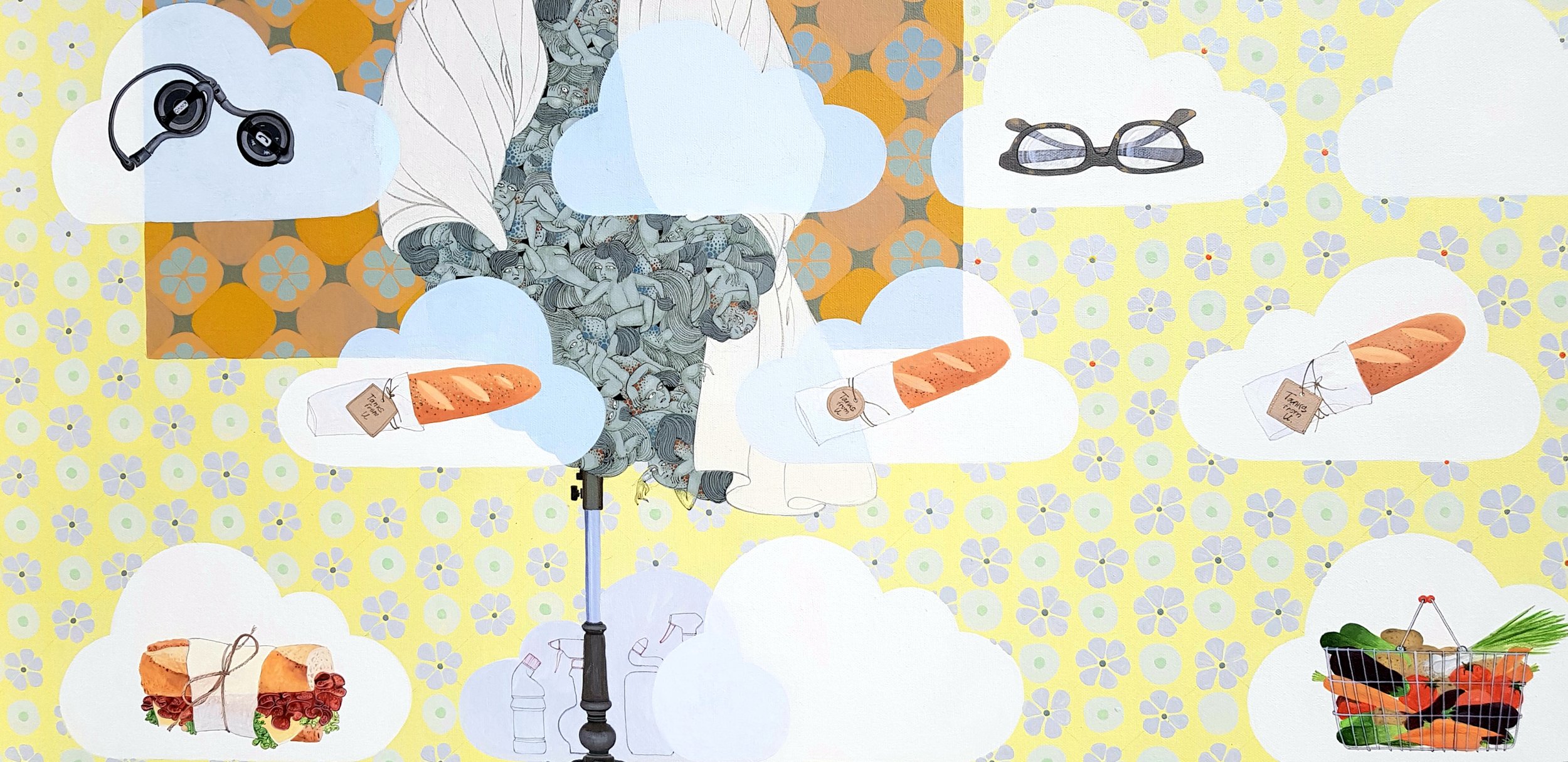
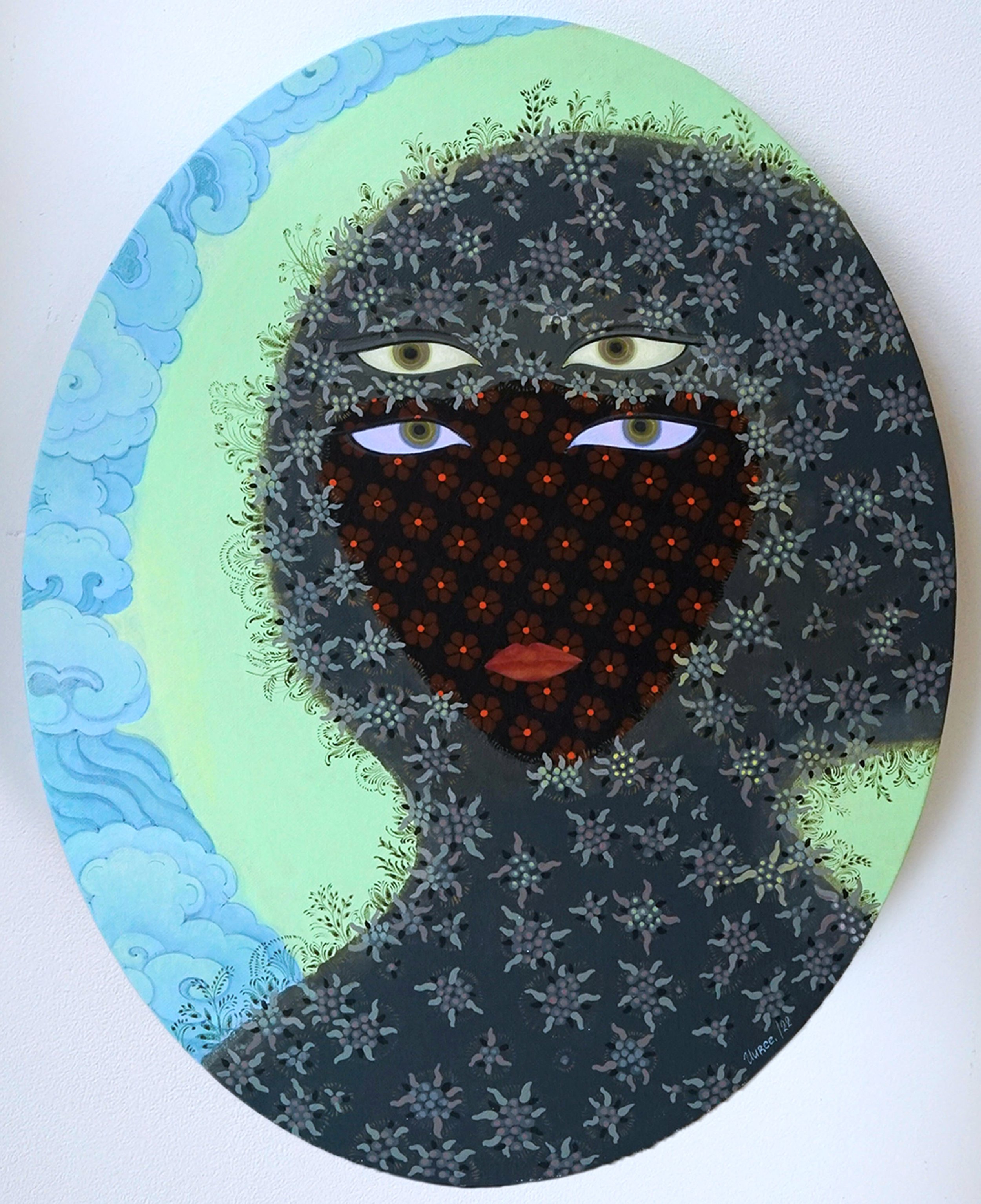
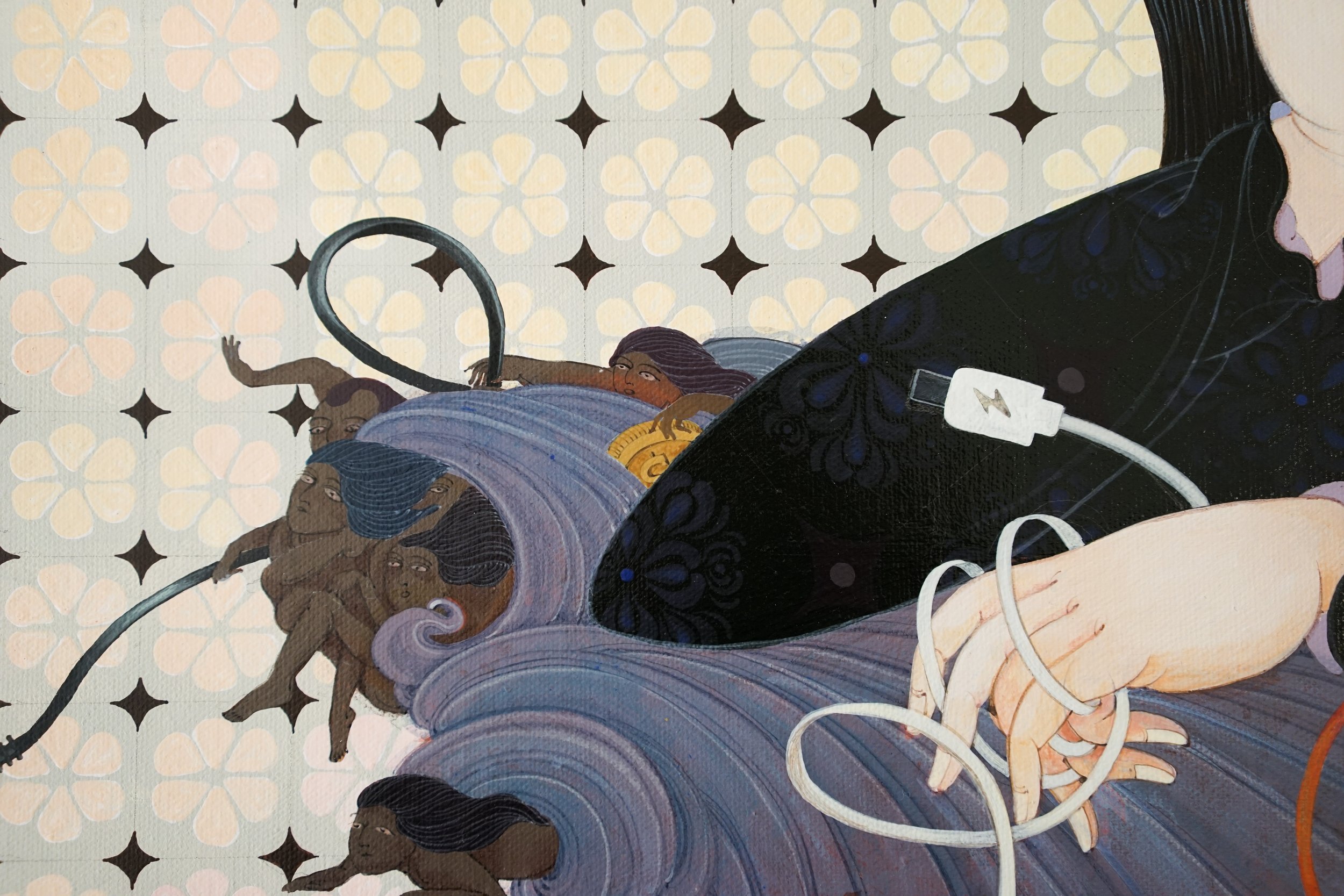
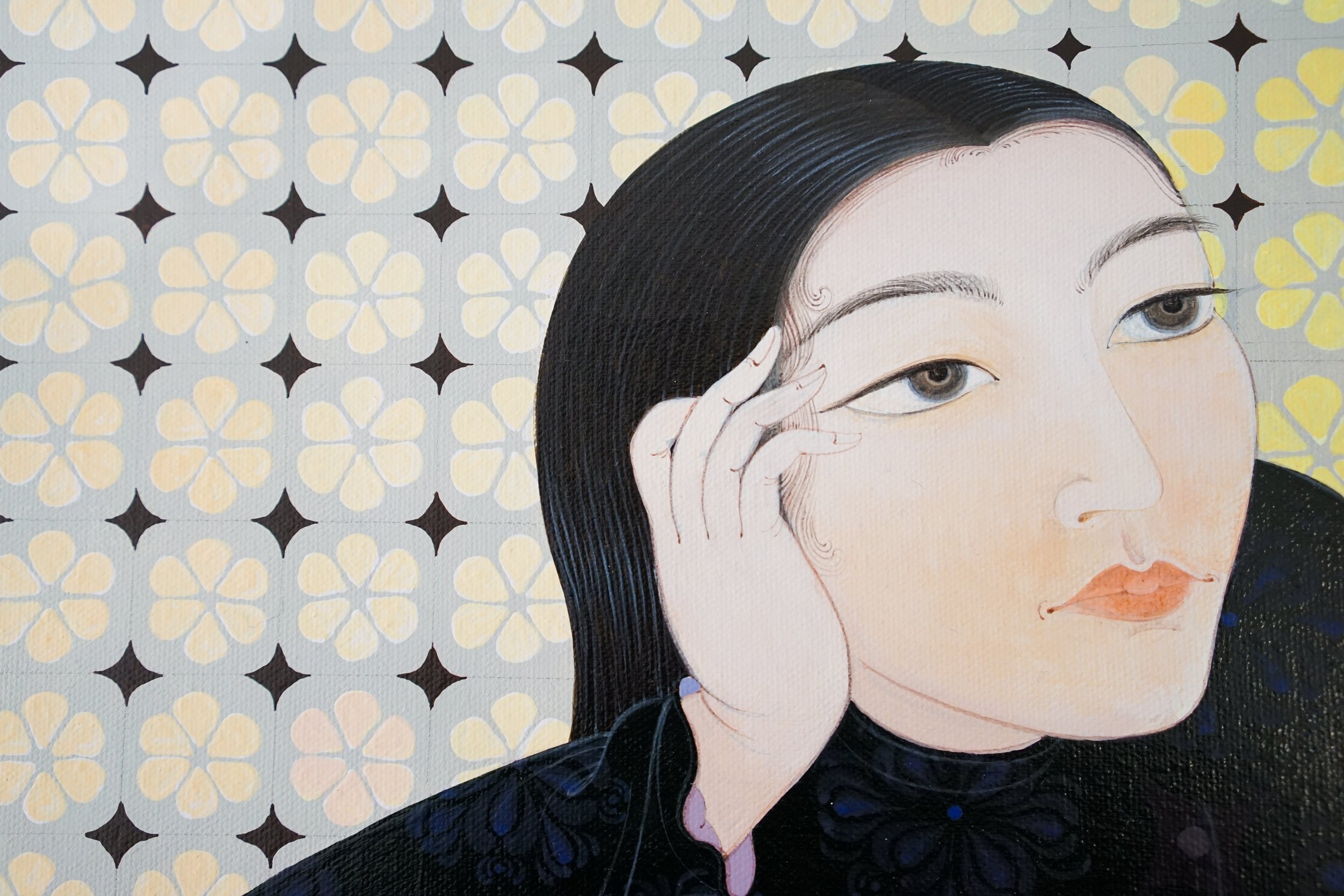
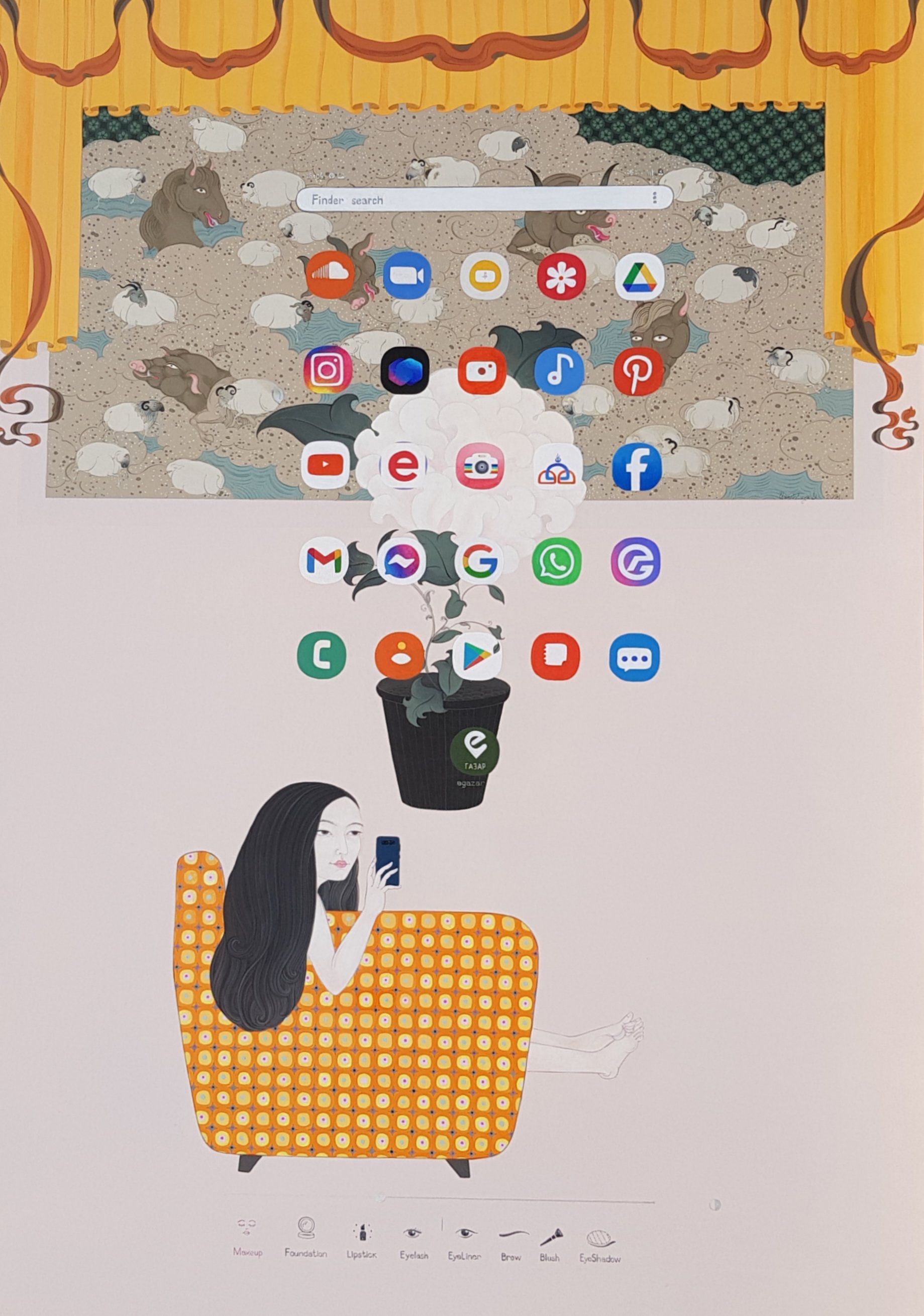
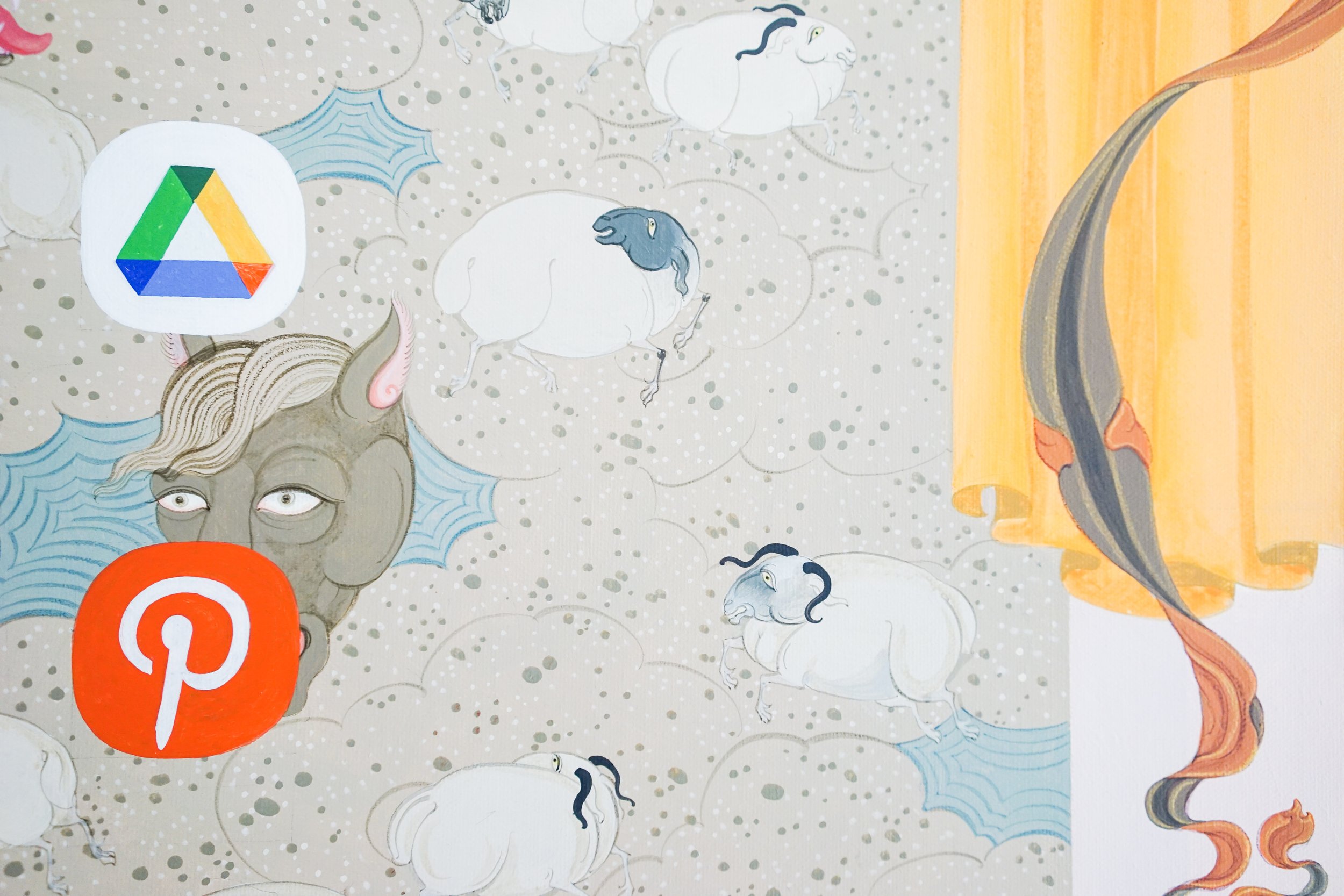
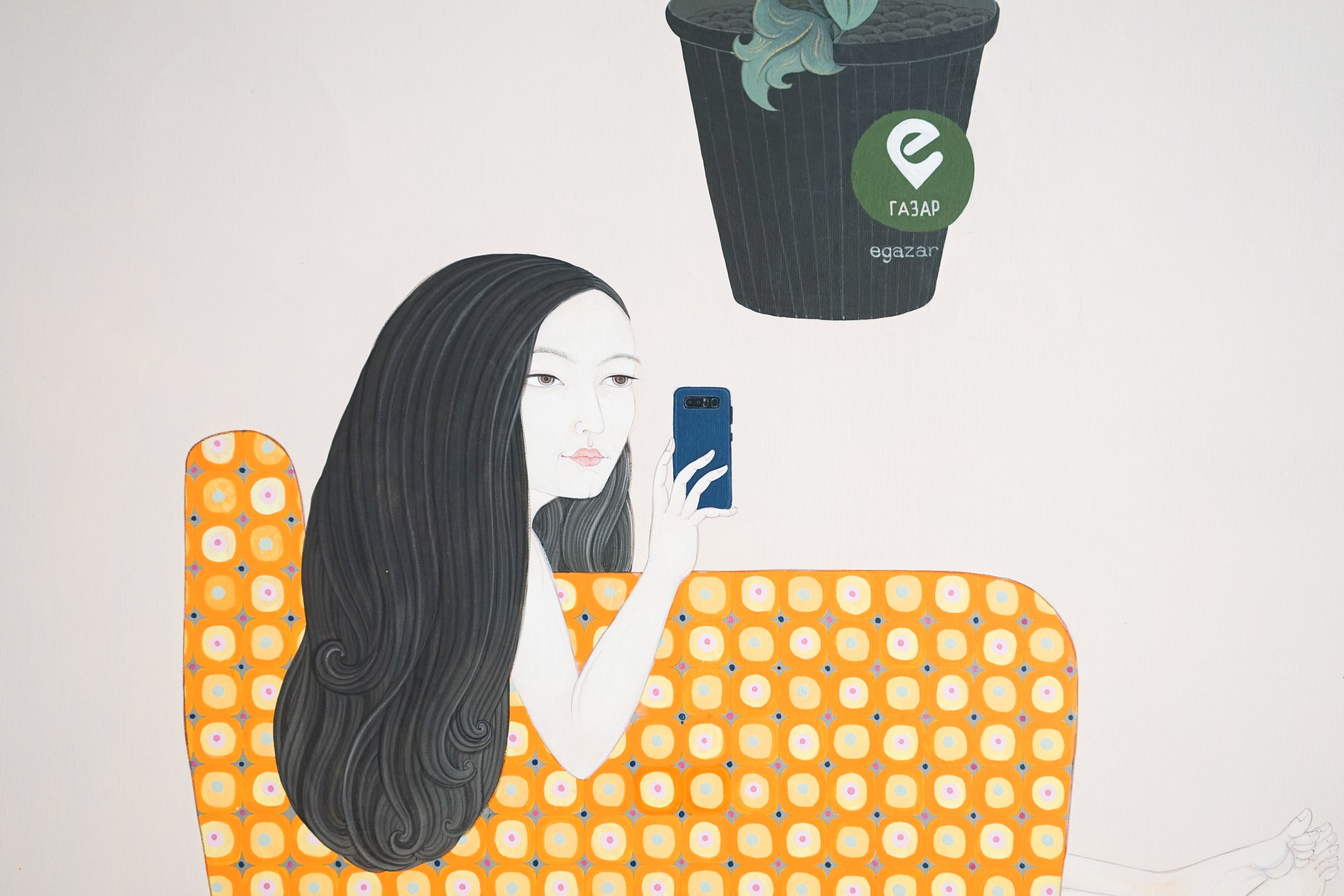
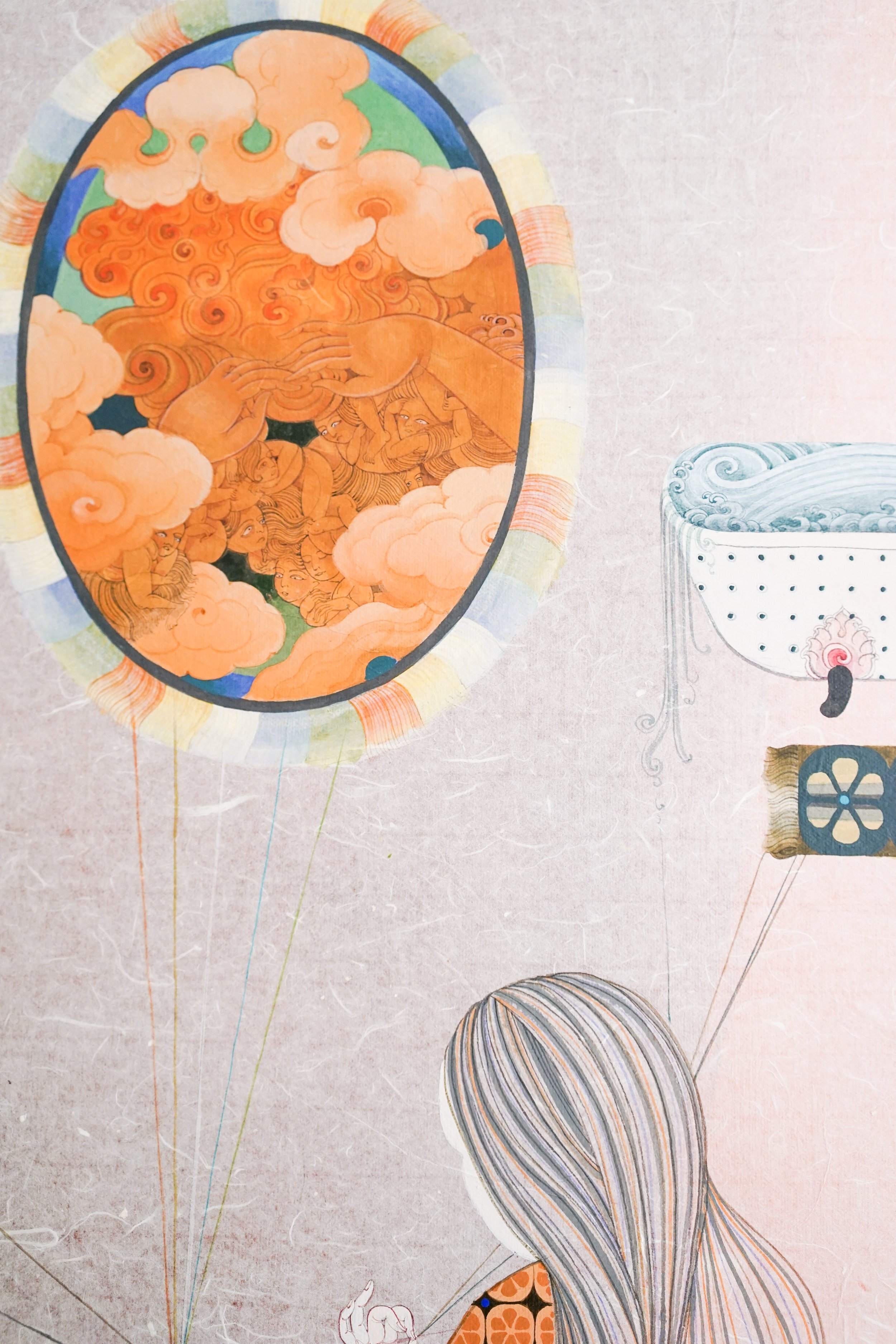
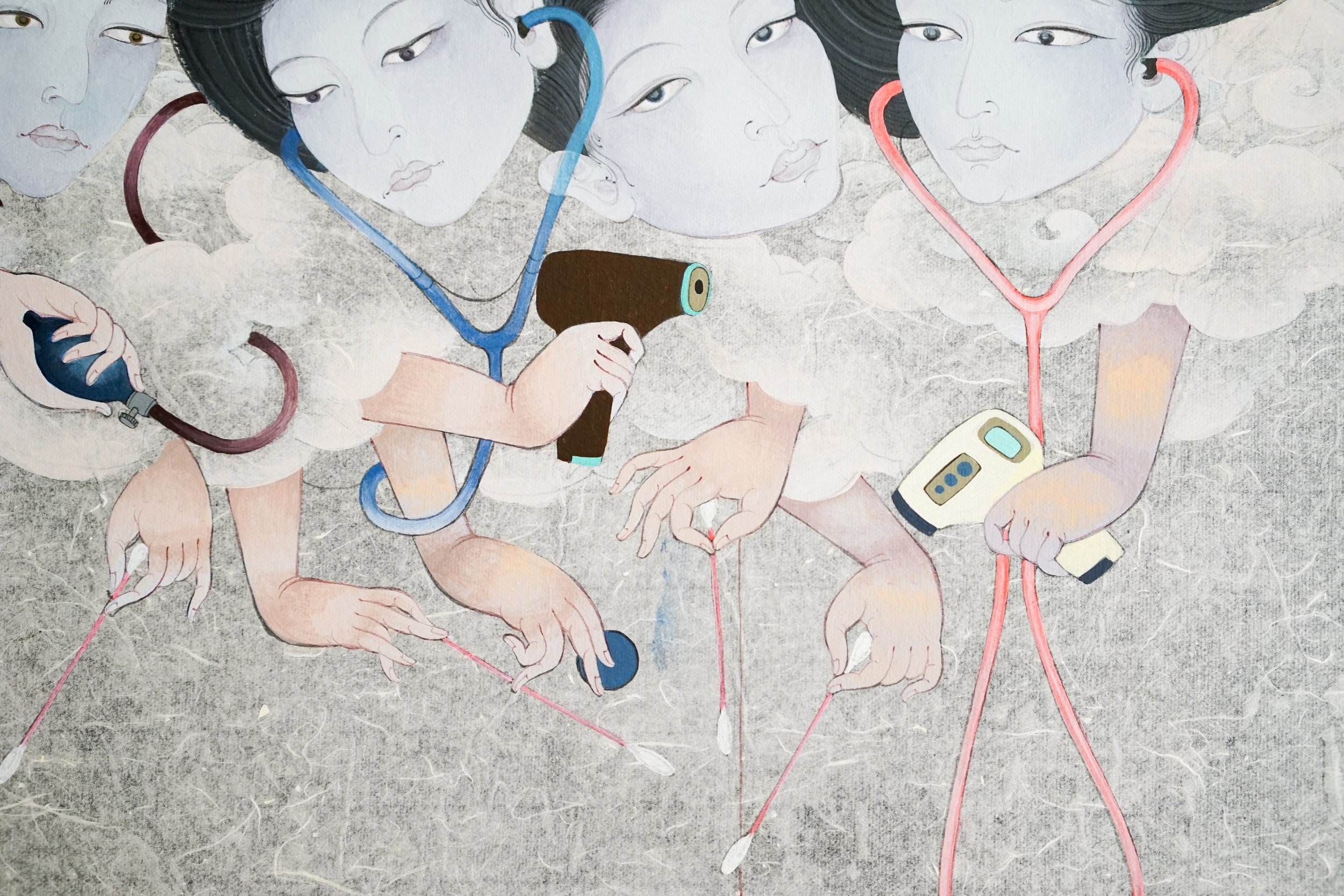
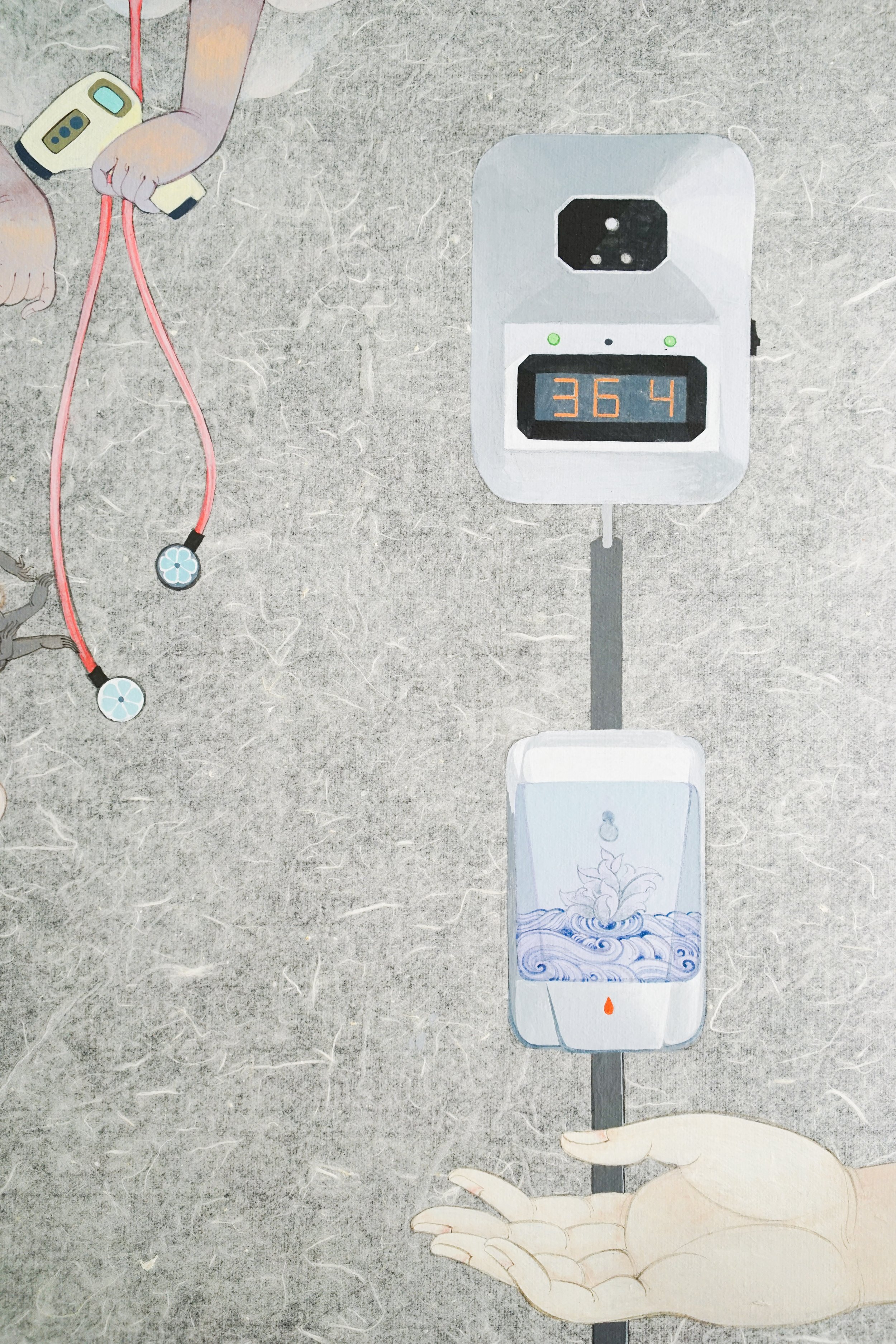
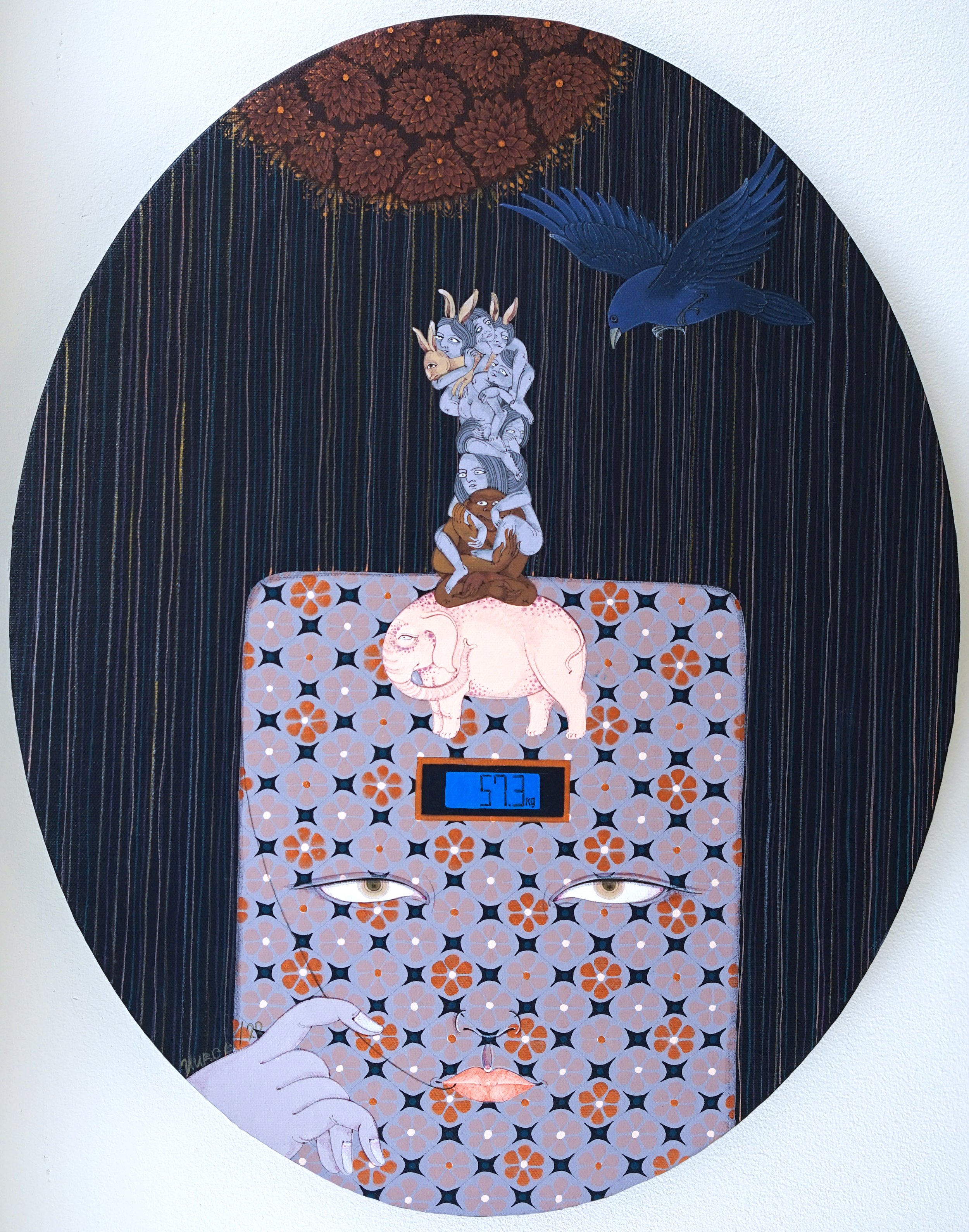
Sapar Contemporary is pleased to present Moods in the Metaverse, Uuriintuya Dagvasambuu’s first solo show in New York. Mongol Zurag painting is a contemporary figurative style that is steeped in Mongolian cultural history. The flat, brightly colored pictorial style originated in the 13th century, during the Mongolian Golden Age, and is more broadly influenced by Persian miniatures. Mongol Zurag’s focus on contemporary and secular subject matter resulted from political tensions between domestic nationalism under the socialist People’s Republic of Mongolia and foreign powers during the Cold War. Mongolian history in the 20th century was marked by Soviet cultural colonialism and censorship.
In recent years, the term Mongol Zurag has become an umbrella term for Mongolian figurative painting, similarly to Japanese nihhon-ga and Chinese guó huà. The new Mongol Zurag style and New Mongol Zurag artists came onto the contemporary Asian Art scene with the 2010 exhibition “Modern Mongolia” at Han Art TZ Gallery in Hong Kong. This exhibition placed Eastern and Western artistic traditions side by side showcasing a fusion of different styles and a new Mongolian modernity. New Mongol Zurag is often seen as a style that maintains its independence from foreign cultural influences. Dagvasambuu is a noted pioneer of Zurag painting style. Her practice combines stylistic tradition of Zurag with contemporary subject matter. Dagvasambuu’s work has become well known in her country and abroad for its a distinct surreal and magical qualities.
“Moods in the Meta,” presents two main themes: the Metaverse or virtual world and global experience of the pandemic. Firstly, the artist addresses the ever-increasing presence of the digital and the virtual in our everyday lives, to the extent that we seem to exist in two parallel universes: the real and the metaverse. Technological advancements and rapid globalization have fundamentally changed our lives; we are no longer grounded in physical reality but spend a lot of time in the abstract meta world. This exhibition does not aim to pass a value judgement on globalization or technological progress, instead the artist acknowledges this new reality and explores the fantastical narratives fostered by meta in the consciousness of the artist. There are reflections on some things that are lost in the process of rapid digitalization of our lives and on new alien technologies, terms and concepts such as 3D, VR , 5G, Zoom, NFT proliferating around us. The artist, like the rest of us, is forced to adapt often without recognizing the magnitude of these changes.
The second theme of the exhibition is connected to the the COVID pandemic, quarantine, lockdowns, and vaccines that became a part of our shared experience. Just as wars and revolutions leave a deep imprint, not only on art but also on people’s mentalities, the COVID era has already made deep traces on Mongolian life. But, Dagvasambuu looks at these sad and uncertain times through a creative lens. Her paintings reflect a surreal side of the pandemic.
There are many similarities between the arts and metaphysics. The latter originated in Ancient Greek philosophy and whose linguistic derivation translates to “beyond the physical.” Art is fictional and meta-cognitive in a way that transcends the material existence. There are many commonalities between the metaverse and metaphysics as well. Both are partially imaginary and unreal, just like abstraction in art. In the pandemic, ordinary people lived quiet lives with long periods of solitude and long hours for meditation, similar to the the solitary lives only known by artists or pilgrims. There are some who claim that recent years might have been the most creative period in human history. In such times, the metaverse can become an essential platform for people to communicate, learn, and express sorrow as well as happiness. The exhibition by Dagvasambuu is commentary on the complex process of globalization in the metaverse through a prism of a magical story-telling done without judgement.
Quarantine, technology, virtual reality and the metaverse are unescapable conditions in modern life. The same is true about the overwhelming influence of Western culture and commercialism on smaller, remote, and more traditional cultures. However, Dagvasambuu does not aim to treat this domineering cultural colonialism as aggression or inevitable, but rather transforms these influences into new artistic inspirations and innovative fantastical works of art. In one of Dagvasambuu’s paintings, activities surrounding the metaverse are represented by a girl who is listening to the wonderful song "Mirage of the Distant Terrain" by a famous Mongolian singer Norovbanzad. Her other work features hybrid characters queueing for vaccinations and COVID tests, and people clinging to their mobile phones. This body of work captures micro-fragments of life shared on social media: instagram posts, avatars, zoom meetings and virtual conversations, which are recurring motifs in the exhibition. We also encounter visual motifs that Dagvasambuu is known for: invoking traditional life in Mongolia that gives way to urban life, vast boundless steppes covered with edelweiss flowers, wandering sheep and the nomadic Mongolian life-style that gradually fades away. Dagvasambuu’s work is emblematic of how Mongol Zurag style is able to meaningfully address contemporary social transformations, conscious and unconscious societal changes, while embracing novel ideas, concepts, motivations, experiments, and experiences.
-Essay by Batzorig Mart, Art Historian, Curator
About Artist
Uuriintuya Dagvasambuu (b.1979) is a contemporary master of the Mongol Zurag painting, and is widely respected for her innovations in this style. She notably integrates traditional Mongolian and Buddhists motifs with contemporary themes, as she chronicles the lives of women and everyday, mundane life across the seasons in her post-nomadic homeland.
She began exhibiting as a student since 2001 and had solo exhibitions in Ulaanbaatar in 2006 and in 2018. Dagvasambuu participated in group exhibitions at home and internationally including exhibitions in Las Vegas (2006), Beijing (2008), Hong Kong (2011), Fukuoka (2012) London (2012), and Düsseldorf (2012). She has also participated in the Shanghai Bienniale (2012), the Fukuoka Asian Art Triennial (2014), and the Asia Pacific Triennial (Queensland, 2015). Dagvasambuu was also a part of the 2017 Documenta 14 tour. Her works are included in the collection of the Johnson Museum of Art, Cornell University.
Dagvasambuu’s development of traditional motifs and pictorial language into unique representations of Mongolian women amidst the rapidly changing life in the 21st century has been recognized in her home country. Her works were selected for the 2013 Grand Prix for Best Artworks of the Year from the National Modern Art Gallery of Mongolia for the 2018 Grand Prix for Best Artwork of the Year from the Union of Mongolian Artists. Dagvasambuu graduated from the Institute of Fine Arts, Mongolian University of Arts and Culture. She currently lives and works in Ulaanbataar.

